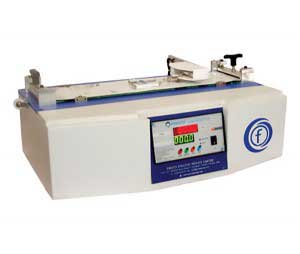Stacking is common in every home. Especially those who read the magazine, try to stack them gracefully, but they keep on slipping. Sometimes it becomes difficult to pile them up. But the question is why magazines and newspaper are compared with each other? Newspapers do not possess a smooth surface. Whereas magazines have a smooth, glossy and shiny texture. Due to a smoother surface, it is difficult to stack them. The friction amid a smooth surface, is very less which initiates slippage. In packaging, to safeguard the label prints from getting destroyed are covered with thin plastic films.
Now a days, the plastic packings are used more and more due to its cost efficiency than paper packings. In various warehouses, the packets are stacked over each other. It slips due to its non-smooth surface, becomes difficult for the store manager to keep the packings safe. So, a packing with high friction is required here. To evaluate the behaviour, of final packaging, it is preferred to test before. Coefficient of Friction Tester is used. It is a simple device to use and gives a crucial aspect of packaging material.
Working principle: There are two ways to conduct this test. One is a sample to sample and the other is a weight on the sample.
- A sample is connected on the platform of the COF Equipment.
- Another sample is tied to the square metal brick that weighs around 200gms.
- This brick is connected to the assembly.
- An outward pull is applied on the brick and made to move on the sample tightened on the platform.
- The force that is applied to pull the brick is used to calculate the coefficient of friction.
In another method,
- The brick is placed directly on the sample clamped on the platform of COF tester.
- The outward force is applied to the brick and the coefficient of friction is measured with respect to force that is applied to move the brick.
Some of the features of the COF testing machine are it is table top machine that is available in two models i.e. computerised and dynamic. The weight of metal brick is 200gms with testing speed having 150mm.min. The capacity of the machine is 3 kgf. It has an LED display in the dynamic model and data logging can be done in the computerised model. The material used in the whole body is mild steel and powder coated for long storage life. ‘S’ type load cell sensor is used to evaluate the force applied.
